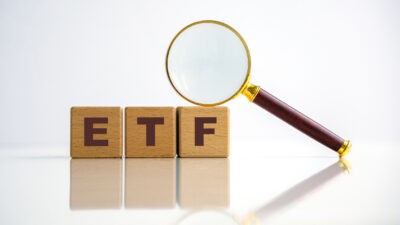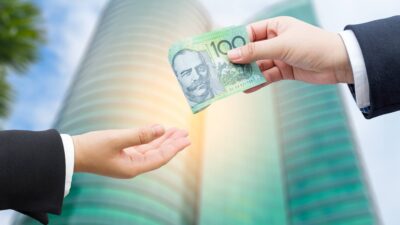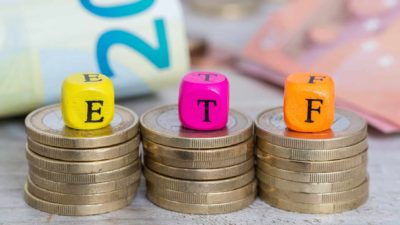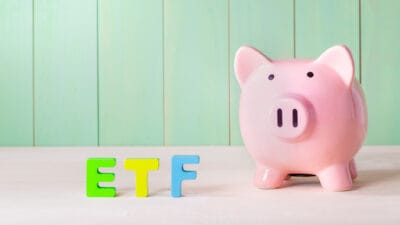The Vanguard Diversified High Growth Index ETF (ASX: VDHG) is an unusual beast on our share market.
This is because the exchange-traded fund (ETF) is essentially an ETF of ETFs.
What that means is it doesn't hold a basket of individual stocks like most other ASX ETFs do.
Instead, it holds seven Vanguard index funds comprising 90% shares and 10% bonds.
The top ETF it holds is the ever-popular Vanguard Australian Shares Index Fund (ASX: VAS) with a 35.79% allocation.
The VAS ETF holds stocks like BHP Group Ltd (ASX: BHP), CSL Ltd (ASX: CSL), and Commonwealth Bank of Australia (ASX: CBA).
Next is the Vanguard International Shares Index Fund (APIR: VAN0003AU) at a 26.46% allocation.
This ETF holds stocks like Apple Inc (NASDAQ: AAPL), Microsoft Corp (NASDAQ: MSFT), and Amazon.com Inc. (NASDAQ: AMZN).
ASX VDHG also holds ETFs comprised of shares in emerging markets and international small-cap stocks, too.
The ASX VDHG has a market capitalisation of $2.07 billion.
Let's take a look at how VDHG has performed based on data recently released by the ASX.
How did VDHG perform over the past 3 years?
According to the data, the VDHG ETF has returned an average of 10.83% per annum over the past three financial years.
That's capital growth combined with reinvested dividends, which historically average 2.69% per annum.
The ASX VDHG fund has averaged 8.25% returns over five years.
That's a pretty good rate of return when you consider we had a global pandemic during this period.
Over the past 12 months, the total return has been 12.48%. Nice!
How does VDHG compare to VAS?
The VAS ETF is the largest ETF in Australia, with a market cap of $12.5 billion.
As we've already noted, it has the top allocation among the seven ETFs comprising the ASX VDHG.
The ASX VAS seeks to mirror the performance of the S&P/ASX 300 Index (ASX: XKO).
So, it's quite different to the VDHG in that it invests in Australian shares only, whereas VDHG has a mix of international shares, ASX shares, bonds, and fixed income.
Shall we compare the pair?
According to the ASX data, the VAS ETF returned an average of 12.32% per annum over the past three financial years.
Its dividends historically average 4.07% per annum.
The ASX VAS fund has averaged 8.45% returns over five years.
Over the past 12 months, the total return has been 15.54%.
Should you buy ASX VDHG shares?
There's a reason the word 'diversified' appears in this ETF's name.
Buying the ASX VDHG is certainly a quick route to portfolio diversification.
All up, the ASX VDHG provides exposure to a diversified global portfolio of more than 16,000 shares.
In terms of fees, the ASX VDHG charges a small fund management fee of 0.27%.
An extra benefit is that the ASX VDHG ETF pays its dividends four times per year.
So, that's all the plus-side stuff of buying the ASX VDHG.
On the risk side, we need to remember that this is a 'high growth' ETF investment.
That means it's primarily full of shares, with a relatively minor exposure to bonds and fixed income.
That means it's more suited to patient, long-term investors who want to prioritise growth over income.
As Vanguard says:
[ASX VDHG] … is designed for investors with a high tolerance for risk who are seeking long-term capital growth.
This might be why the ASX VDHG is currently a favourite ETF pick among millennial investors, who have a longer time horizon than Gen Xers or retirees, according to data from Selfwealth Ltd (ASX: SWF).
When considering buying this ETF, you also need to think about the yield.
VDHG's average distribution yield is only 2.67% per annum, which has little appeal for income investors.
These days, you could get near twice that by putting your money in a high-interest savings account.
ASX VDHG share price snapshot
The Vanguard Diversified High Growth Index ETF closed the session yesterday at $59.02, up 0.2%.
Over the past year, it has traded between a low of $50.29 per share and a high of $59.50 per share.
In the year to date, the ASX VDHG has risen 10.6%.
By comparison, the S&P/ASX All Ordinaries Index (ASX: XAO) has gained 5.4% over the same period.









